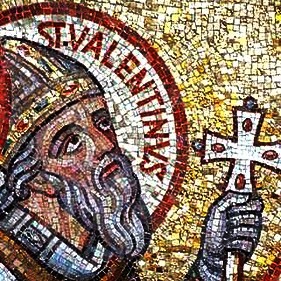
One of the most intelligent early heretics was Valentinus, who came from Egypt to Rome sometime in the early part of the second century, and lived there about twenty years. He undertook to write a complete history of all the celestial evolutions which, in the mysterious region of those celestial forces and heavenly intelligences—which he called The Pleroma—prepared the way for the coming of the only-begotten Son, and pretended to determine in this way the nature and power of that only-begotten Son. In this extravagant attempt, he did not hesitate to borrow a number of expressions and ideas, such as the Word, the Only-begotten, Life, Light, Fulness, Truth, Grace, the Redeemer, the Comforter, from the gospel of St. John, and to use them for his own purposes.
WHEN WERE OUR GOSPELS WRITTEN? BY CONSTANTINE TISCHENDORF
Chapter I. Ecclesiastical Testimony. – CHAPTER I. ECCLESIASTICAL TESTIMONY.
Valentinus
Valentinus was a second-century Christian mystic and poet. He is sometimes referred to as a “Gnostic” because of the importance that mystical knowledge (gnosis) plays in his thought. Valentinus was born in Phrebonis in upper Egypt about 100 AD and educated in nearby Alexandria. There he became a disciple of the Christian teacher Theudas who had been a disciple of Saint Paul. He claimed that Theudas taught him secret wisdom that Paul had taught privately to his inner circle.
Like many early Christian mystics, Valentinus claimed that he had a vision of the risen Christ. Following his vision, he began his career as a Christian teacher at Alexandria around 120AD. His esoteric theology quickly attracted a large following in Egypt and Syria. In 136 AD, he went to Rome after stopping briefly in Cyprus. At Rome he quickly rose to prominence and was widely respected for his eloquence. He was so well regarded in the Roman church that in 143 AD he was a candidate for the office of bishop. It seems likely he refused the position. He continued to teach in Rome for at least ten more years.
Nothing certain is known of his later career. He may have died at Rome around 155 AD. According to a late source, he left Rome and went to Cyprus. Some of the legends about “Saint Valentine” probably reflect the lasting prestige he enjoyed at Rome. After Valentinus’ death, his disciples further developed his ideas and spread them throughout the Roman Empire.
Valentinian Gnosticism was the first truly systematic attempt at Christian Theology, Philosophy and Mythology. Despite this, the system and church of Valentinian Christianity was derided as ‘heresy’ by later members of the proto-orthodoxy. Since the discovery of the Nag Hammadi texts we now have scriptures from this early Christian movement. What did the Valentinians believe? What made them “Gnostic?” What are some of the differences between Western and Eastern Valentinian Gnosticism?